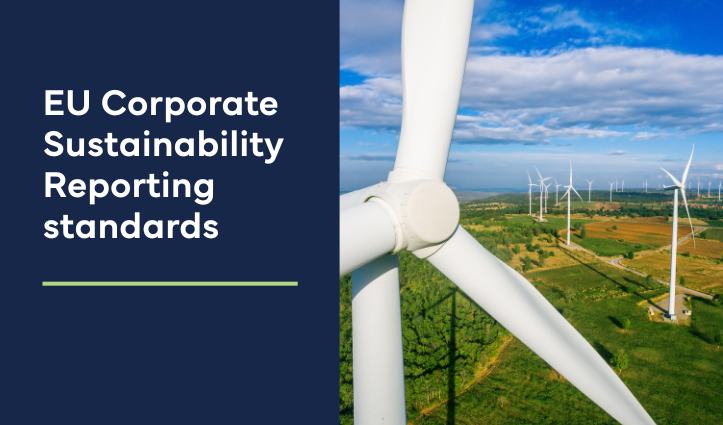Large companies based in Europe or with significant European operations must now disclose the impact they have on people and planet – not just how ESG issues impact them.
The new EU legislation – the Corporate Sustainability Reporting Directive (CSRD) – applies one set of reporting standards in place of the many options companies had before. This makes it easier to compare company performance and much more obvious who is making progress against their sustainability targets.
First, what’s new about CSRD?
Data is externally audited to give an extra layer of assurance that it’s not greenwashing.
“CSRD gets you to define what really matters, understand your supplier ecosystem and take responsibility for your collective impact,” says Joanne Grace, Head of ESG Governance and Reporting at Glanbia. “A set of formal standards known as the European Sustainability Reporting Standards (ESRS) clarifies the approach to take and what you must disclose.”
“What’s known as the ‘double materiality’ exercise gets you to really focus on your most important areas,” says Joanne. “You’re now showing impact not just from the outside in, but from the inside out.”
Glanbia doesn’t have to report on everything – just what’s most material to the business.
“Our environmental pillar is important for us,” says John Dardis, SVP Sustainability at Glanbia, “as it is for most businesses. It puts a focus on how we manage resources across energy consumption, water usage, recyclable consumer packing, and the circular economy – we’re building our capabilities in all those areas,” he says.
“We’ve been reporting under the Global Reporting Initiative Standards and the Task Force on Climate-related Financial Disclosures (TFCFD) for several years, so we already collect a lot of the data. However, CSRD requires more data points and more granularity ” adds Joanne.
CSRD demands a deep dive into the supply chain
Businesses must have proof points that suppliers are doing the right thing, too. They can’t wash their hands of that responsibility and leave it to the supplier.
“We’ve piloted value-chain footprinting for our customers, providing carbon emissions data at an ingredient or product level,” says John. “To do that, we go right back into our value chain. We’re getting more demands to provide specific data points. When you can provide customers with that kind of information, it supports our overall relationship.”
In addition, the way CSRD is structured means that companies can influence their supply chain to make their operations in turn more sustainable. “The regulatory aspect and the commercial aspects overlap,” he says.
Why CSRD makes businesses more resilient
“It’s about carrying operational efficiency, something that has always been our strength but now with a level of transparency and a real need to drive actions” John says.
He gives as an example the energy management systems that have been installed in Glanbia’s biggest sites. “Our engineering team have jumped on the opportunity to apply energy management systems across our plants putting real time analysis on efficiency opportunities. This data focus boosts the bottom line and lowers our emissions. The approach has emboldened our site teams winning hearts and minds.”
What’s the main challenge of the CSRD for Glanbia?
The speed with which CSRD has been brought in, the complexity of what’s required and the means to communicate that internally have all been challenging. “But the biggest challenge has been making sure that we’re audit ready,” says Joanne. “That’s probably the game-changer from a reporting point of view.”
“Over the past three years, we’ve purposely aligned our annual sustainability report with Global Reporting Initiative (GRI) standards,” Joanne says. “CSRD has ramped it up a gear, no doubt. But the GRI platform has certainly been helpful to build our capabilities for what’s coming.”
She’s confident that CSRD will support businesses like Glanbia to be robust and future-focused, able to weather headwinds.
“When you look at what CSRD is trying to do, it’s trying to drive transparency and comparability between organisations and embedding accountability.”
“Our Better Nutrition Better World program has clear roadmaps for delivery of our ambition.” John adds ‘It allows us integrate sustainability into everyone's role and, ultimately, is rolling up into recordable progress for our stakeholders which is really the intention of CSRD”.
Learn more about our sustainability approach in our 2024 Sustainability Report.
 |
|
CSRD explainedThe EU’s Corporate Sustainability Reporting Directive entered into force on 5 January 2023. It replaces legislation from 2014 known as the Non-Financial Reporting Directive. The CSRD broadens the rules over what companies must publicly disclose, with a phased-in approach for compliance. Larger companies with net turnover and assets in the millions are among the first to report. Glanbia has published a Year Zero report and will publish its first audited report in Q1 of 2026, based on 2025 data.
|
